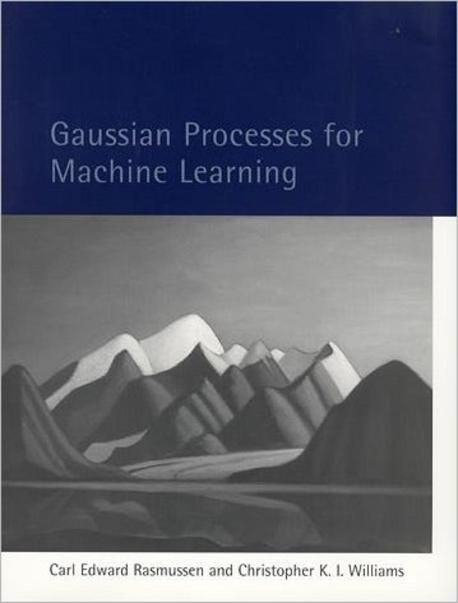
Gaussian Processes for Machine Learning
- 발행사항
- Cambridge, Mass: MIT Press, 2005
- 형태사항
- xviii, 248p.: ill.; 26 cm
- 서지주기
- Includes bibliographical references and indexes
소장정보
| 위치 | 등록번호 | 청구기호 / 출력 | 상태 | 반납예정일 |
|---|---|---|---|---|
지금 이용 불가 (1) | ||||
| 자료실 | E208383 | 대출중 | 2025.05.26 | |
- 등록번호
- E208383
- 상태/반납예정일
- 대출중
- 2025.05.26
- 위치/청구기호(출력)
- 자료실
책 소개
Gaussian processes (GPs) provide a principled, practical, probabilistic approach to learning in kernel machines. GPs have received increased attention in the machine-learning community over the past decade, and this book provides a long-needed systematic and unified treatment of theoretical and practical aspects of GPs in machine learning. The treatment is comprehensive and self-contained, targeted at researchers and students in machine learning and applied statistics. The book deals with the supervised-learning problem for both regression and classification, and includes detailed algorithms. A wide variety of covariance (kernel) functions are presented and their properties discussed. Model selection is discussed both from a Bayesian and a classical perspective. Many connections to other well-known techniques from machine learning and statistics are discussed, including support-vector machines, neural networks, splines, regularization networks, relevance vector machines and others. Theoretical issues including learning curves and the PAC-Bayesian framework are treated, and several approximation methods for learning with large datasets are discussed. The book contains illustrative examples and exercises, and code and datasets are available on the Web. Appendixes provide mathematical background and a discussion of Gaussian Markov processes.
About the Author
Carl Edward Rasmussen is a Lecturer at the Department of Engineering, University of Cambridge, and Adjunct Research Scientist at the Max Planck Institute for Biological Cybernetics, Tübingen.Christopher K. I. Williams is Professor of Machine Learning and Director of the Institute for Adaptive and Neural Computation in the School of Informatics, University of Edinburgh.
